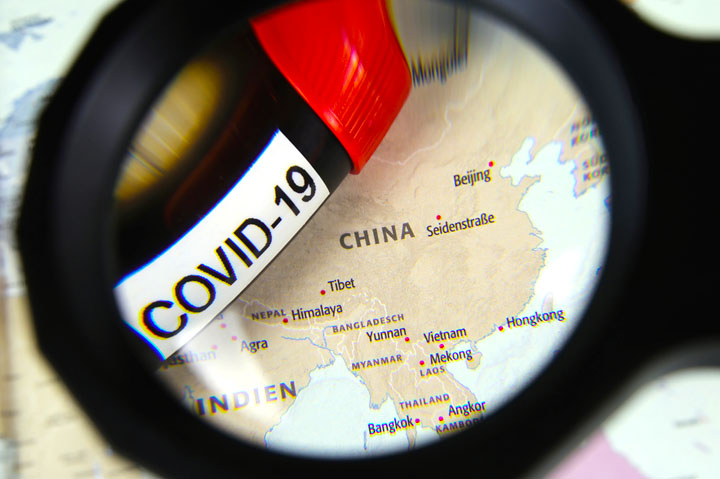December 08, 2022
China Eases Zero-COVID: What Does It Mean for Promo?
Industry executives welcomed steps to scale back draconian virus-driven societal restrictions that have contributed to supply chain disruption, but question if the leniency will last and worry that new challenges could arise as coronavirus spreads.
Beijing is backing off “zero-COVID,” but from a supply chain perspective in the promotional products industry, executives say don’t celebrate anything just yet.
Authorities in China on Wednesday, Dec. 7, announced that they are nixing many quarantine and testing requirements related to COVID-19. They’ve also established that work and production will be allowed to continue in locales unless a particular area is designated as high risk.

These and related moves represent a reversal of the communist government’s so-called zero tolerance policy on COVID, which has seen swift and sweeping full or partial lockdowns of cities, ports, factories and more if even a few positive cases of the virus are detected.
The change from China’s National Health Commission comes amid widespread protests against zero-COVID, which has heaped hardships on the population and hurt China’s economy.
How Do the Changes Affect Promo?
During the pandemic, China’s on-again, off-again and often abrupt shutdowns have rippled through global supply chains, with restrictions contributing to ills like reduced manufacturing output, longer lead times for production, inventory shortages and inflation across a range of industries, including the North American promotional products market.
With the majority of promo products sold in the U.S. and Canada being made in China, the first-glance read on China taking steps toward normalcy – toward “living with COVID,” so to speak – would be that it’s a big win for manufacturing/exporting partners in China and thus to the supply chains so vital to keeping the domestic branded merchandise industry moving.
While sourcing leaders in promo wholeheartedly praised the shift away from zero-COVID, they sounded cautionary notes to ASI Media as well, saying things are more complicated than they may first appear.
“Everyone is eager for China to fully reopen and to move past the strict zero-COVID policies that have been in place, and having fewer restrictions will certainly help with the supply chain and keep goods flowing more freely,” says Teresa Fang, vice president of supply chain at Trevose, PA-based Top 40 supplier alphabroder (asi/34063).
Fang notes, however, that China is lifting restrictions at the height of cold/flu season and on the heels of COVID spreading at unprecedented rates within in the country during November. This reality could soon lead to problems like a wave of workers being off the job sick, thereby curtailing productivity at factories, ports and within the transport infrastructure that moves goods. The healthcare system could also be overwhelmed.
“There’s some reporting that says China may not be ready for the surge of cases that it could potentially see based on vaccination rates among the elderly and hospital ICU capacity or medications,” Fang says. “If the situation starts to become severe, then we may see strict measures being brought back to combat COVID in certain areas.”
China risks a 'wave of infections’ after relaxing its zero-Covid policy, warns Anthony Fauci https://t.co/JT9yLbsxdT pic.twitter.com/Izj83aWkR7
— Financial Times (@FinancialTimes) December 7, 2022
Eli Schneider shares Fang’s concerns. The promo sourcing/supply chain pro believes there could be trouble ahead, at least in the near term.
“My prediction is that we will actually see more disruptions in the coming weeks and months because COVID will rip through a population that has very little immunity,” says Schneider, senior director of operations for Los Angeles-headquartered Top 40 distributor BAMKO (asi/131431), which sources directly from China for some of its product needs and has boots on the ground there.
In the long term, Schneider sees the dialing back of zero-COVID as a positive for supply chains and for Chinese society – but not before more challenges.
“Ultimately,” Schneider says, “China’s zero-COVID policy was doomed to fail. Omicron and its various subvariants are way too contagious to be contained. The decision to move away from zero-COVID is one China needed to make, rather than the current slow-bleed trajectory they were on. Still, they have dug themselves a pretty deep hole and there’s no pain-free way out.”
Jeffrey Nanus is more upbeat on the lifting of the strictest of COVID societal controls in China, but isn’t yet convinced that Beijing won’t return to more draconian measures if the virus spreads rampantly.
“Reducing restrictions is great for business,” says the CEO of Norwood, NJ-based hard goods supplier AAA Innovations (asi/30023). “Our team travels to every factory we work with to conduct inspections, and in some cities we weren’t allowed in due to COVID restrictions. Also, I believe this will open business travel from the U.S. to China. Depending on the potential increase in COVID cases in China, this will help normalize business. All that said, if COVID spikes badly, I’m sure that the rules will change again.”
What’s Changed in China’s COVID Rules?
Under the policy shift announced this week, people in China are no longer required to show negative virus tests or health codes to travel between different provinces.
The revised regulations also prevent local officials from randomly locking down neighborhoods and forcing businesses to close, though particular apartment buildings, for example, can be temporarily cut off from society if infections are detected there. Have mild or no symptoms but tested positive? Now you’re allowed to quarantine at home instead of going to a government-run facility.
“Most requirements for virus testing and the scanning of health QR codes when entering premises will be scrapped except for places deemed vulnerable such as nursing homes, nurseries or schools,” The Wall Street Journal reported.